The first U.S. Air Force aircraft capable of supersonic speed at level flight, the North American F-100 made its mark on aviation history. Matt Balazs built his 1/4.75-scale version from the CARF-Models composite kit and has impressed spectators at events like Top Gun, where he recently placed third with the model in the Pro Jet class. I was fortunate to catch up with Matt to learn more about this beautiful—and fast!—model.

Matt pushes his CARF-Models F-100D back after a great flight at Top Gun. With an overall length of 11.8 feet and an 8.2-inch wingspan, it’s huge!
Model Airplane News: How long have you been into RC airplanes, and how long have you been flying in scale competition? Any important folks who influenced or helped you along the way?
Matt Balazs: I actually started flying when I was five, so I’ve been in RC for 42 years now. I got into it because of my dad, who started taking me to the flying field when I was just three years old. I grew up flying pattern and IMAC, and around 2010 I started wanting to go through my bucket list of airplanes. I built and flew a CARF Gee Bee, then a jet about six or seven years ago. And then I really got into scale airplanes! Guys like Pete Goldsmith and Sean McHale were happy to lend a hand and offer me guidance along the way. When you go to jet or scale events, that’s where all the old pattern guys are now. The scale side is the real modeling part of it.
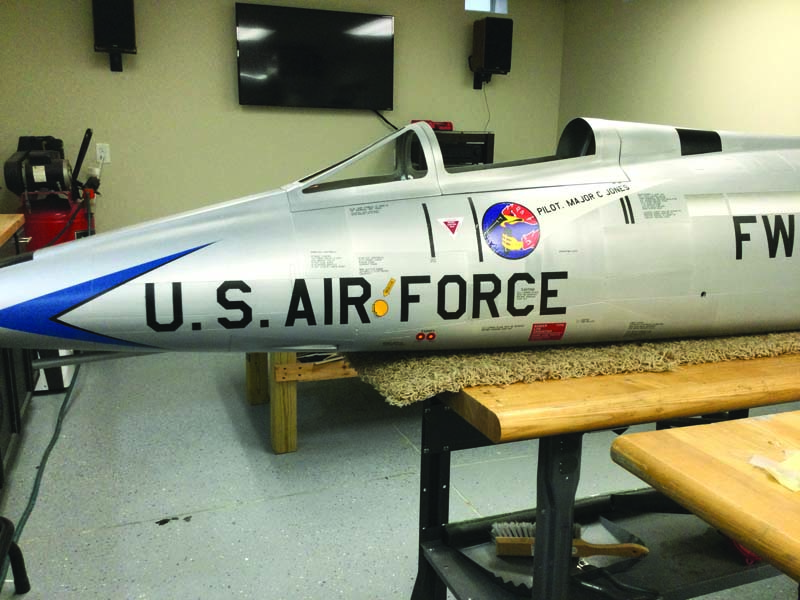
The final stages of finishing the details of the model. Most of the nomenclature and markings are paint, the small nomenclature is dry rub, and the squadron logo is a water slide.
MAN: How long did it take to build and detail your jet?
MB: Probably six months. It is a CARF airplane, so a lot of the building—hinges, horns, etc.—is already completed. The structure is there; you do the turbine and radio installation and then the “cake decorating,” the finishing and scale details.
It’s interesting to note that this CARF F-100 has had two lives. At first it was a really scale, complicated, and heavy model—73 to 77 pounds. CARF redid it, and I built the first V2 prototype model. Fully fueled and with drop tanks, it weighs just 60 pounds—12 to 15 pounds lighter than CARF’s first version F-100.
MAN: Tell us about the scale scheme and the full-scale aircraft on which it’s based. Where did you get the documentation?
MB: I have the original artist rendering for this aircraft, which went into service in 1956 in France with the 48th Tactical Fighter Wing, 492nd Tactical Fighter Squadron in Chaumont. Different color stripes represented the different fighter wings. I picked this color scheme because it wasn’t well known and also something I could see in the sky, and I thought it looked really good on the plane.
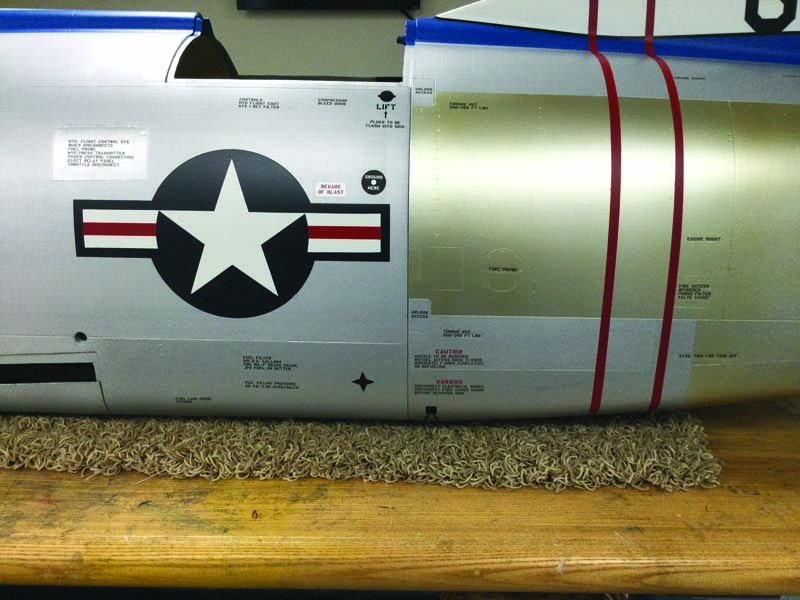
The back half of the fuselage. The top hatch provides easy access to the turbine and afterburner light system and the many details that make the model accurate.
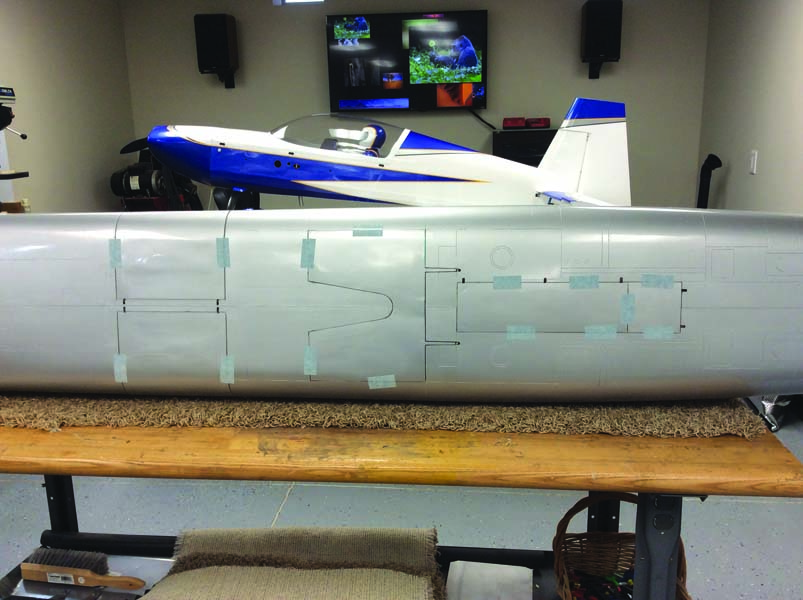
Right out of the box from CARF-Models. You can see the level of prefabrication, with gear doors hinged and set correctly. Matt’s model included the optional speed brake installed.
MAN: How did you create the aluminum finish to look like separate panels? What about the details and nomenclature?
MB: Because the airplane is more or less constructed, I wanted to show how you could make it look really scale without having to paint the entire airframe. It comes in a silver finish, so I looked at photos of full-size, silver F-100s to see the grain of the aluminum, or which panels looked “different.” I taped off the panels and rubbed a 380-grit scuff pad in different orientations on different panels. The weathering is where this method pops: Using a black oil paint from Michael’s, I wiped in the direction that water would have flowed. The streaking gets into the scuff marks and ends up looking like panels! So most of the silver on the airplane is just the original base coat. Then on a couple sections, like the wing, I used a platinum paint to make it brighter. I painted a few panels on the top of the fuselage platinum as well (these were panels that were serviced and taken on/off and cleaned more).
The paint, stencils, and waterslide decals are from Tailor Made Decals in Germany. I sent them photos of the airplane and they matched it up and made custom paint and decals for it. Most of the nomenclature is paint, and the squadron logo is a waterslide decal. I used some small dry-rubs as well. When I used turpentine to take off some of the oil paint I used for weathering, I noticed that it made some of the dry rubs look deteriorated, so that helped with aging. Sean McHale was a really big help here as well.
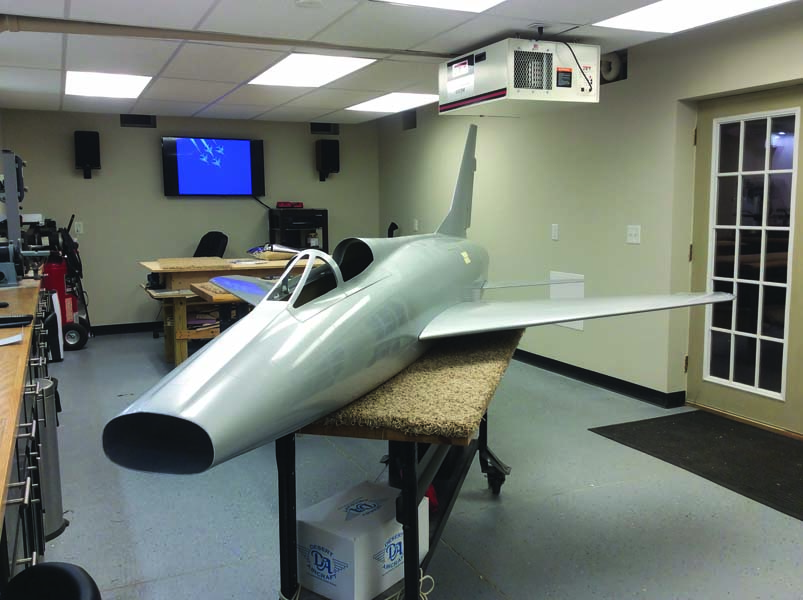
The first parts fitting. Sitting on a 6-foot table, this jet takes up a lot of space in the shop. Everything fit together perfectly.
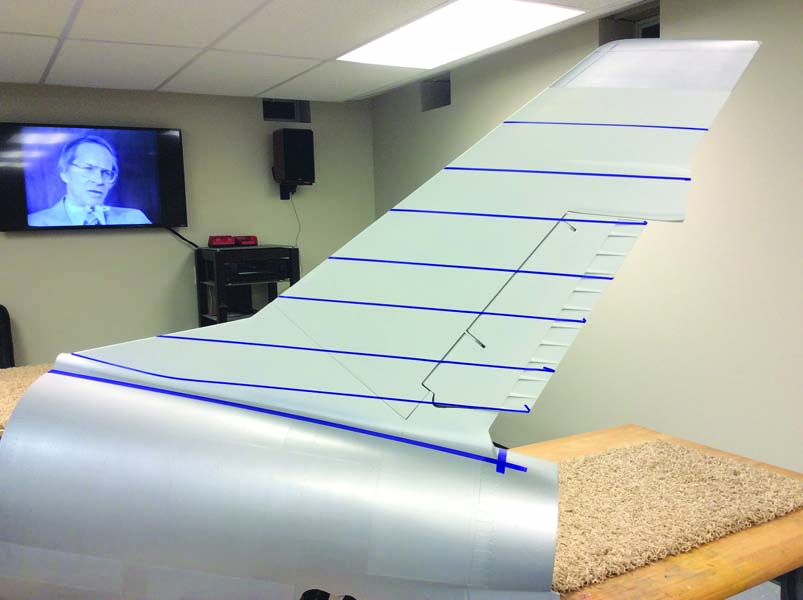
The white base color has been applied to the tail, and now hours of striping begins. A building laser helps to keep the lines straight.
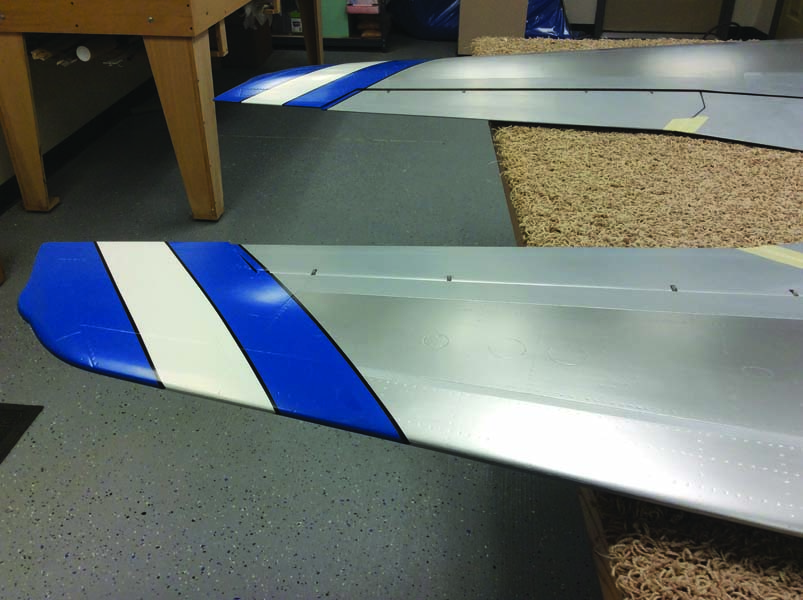
The wingtip stripes are complete: white, then blue, and the final thin black stripes. On the leading edge and center of the wing, Matt applied platinum paint to give the finish a bright aluminum look.
MAN: You power your F-100D with a KingTech K235. Were that engine and its components an easy fit?
MB: It dropped right in; that turbine is a great combination with the airplane. It has worked flawlessly for about 150 flights, from Florida to Maine with no problems at all.
MAN: Your model has retractable gear and speed brakes. Can you tell us more about those? Any other special features?
MB: I use the CARF struts, with Electron motorized landing gear. The speed brakes are an option for the kit, and they use electric linear actuators. They are really effective. Everything on this plane is servo driven or electric; it’s really maintenance free.
I also added an afterburner kit light system from uniLIGHT. This low-heat LED has three rings. This winter, I’m going to add the rest of the uniLIGHT lighting system into the plane.
MAN: Do the drop tanks on your F-100D affect its flight performance?
MB: I use the optional, non-functional drop tanks from CARF. Without the drop tanks, the plane is pretty slippery. It’s fast—easily 175mph!—and takes a while to slow down. With the drop tanks, the jet flies much more scale-like. At full throttle, it’s barely 150mph. The tanks make it easier to fly at small fields.
MAN: You fly with a PowerBox Core radio, right? Any special features of the PowerBox you use with the F-100D to make setup or flying easier?
MB: Yes, I fly with the Core and two PBR-26D receivers, and I use a Royal with an iGyro for power management. I use all JR servos. With the Royal I have GPS 3, which manages the gain based on speed so I don’t need to run multiple gain settings. It turns the gain down the faster I go and really makes the plane feel locked in, from takeoff to landing, so I can focus on flying. The Core’s telemetry warns me if the receiver batteries are going down, if the turbine is getting hot., etc. The Core radio makes complicated airplanes not nearly as risky to fly.
MAN: Speaking of flying, how does the F-100D perform? Also, tell us about your scale competition flight routine and the moves you think best show the model’s ability.
MB: The F-100D flies even better than I would have expected it to! It has performance that’s between a sport jet and a scale jet. Because it’s lighter, it will really slow down to land, but at speed it flies straight as an arrow. It’s a pretty honest airplane. There’s so much sweep in the wings it settles right in for landing. It rolls really, really well, so I like to do four-point rolls and slow rolls. It’s low maintenance and sits at the right angle when it flies, it looks “right,” is easy to fly at the right speed, and it looks scale in the air.

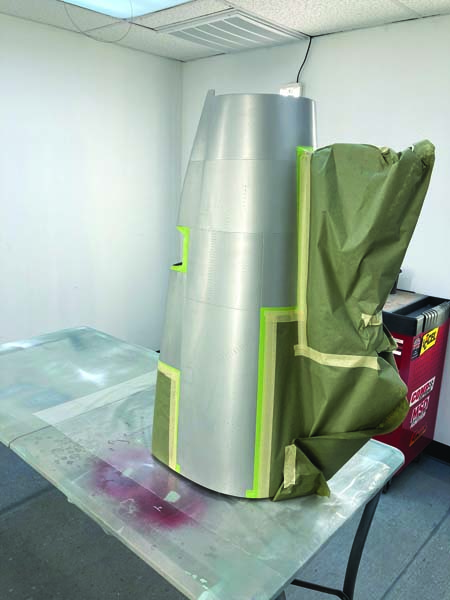
The full-size F-100 had a titanium skin on the back of the fuselage that would quickly become discolored and, over time, turn blue/purple from the heat of the jet engine.
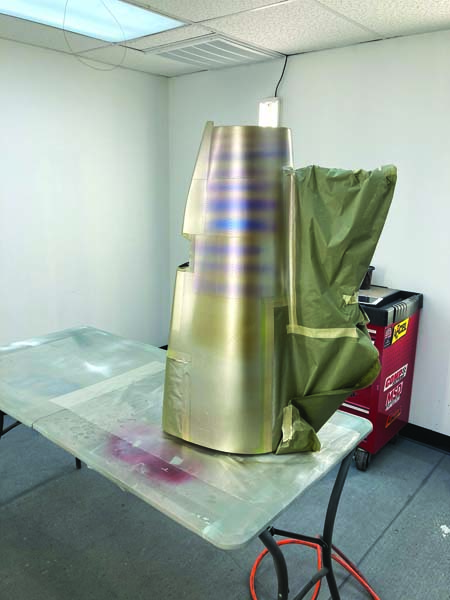
To simulate this on the model, Matt airbrushed platinum, transparent amber, blue, and purple to create a realistic “hot section.” The left photo is bare, the right photo looks well-used.

The optional cockpit kit is installed using magnets so it’s easy to access the onboard electronics. The highly detailed kit also includes the ejection seat. Matt used a jet pilot from Warbirdpilots.com to finish the cockpit.
MAN: Thank you for sharing how you created this stunning jet, Matt. We look forward to seeing you and your F-100D on the flightline again soon!
By Debra Cleghorn
Photos by Matt Balazs & David Hart (capturedfromthehart.com)



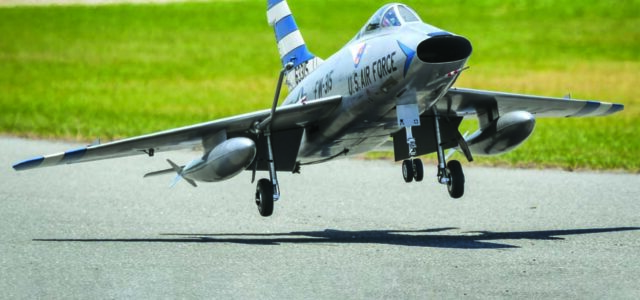
















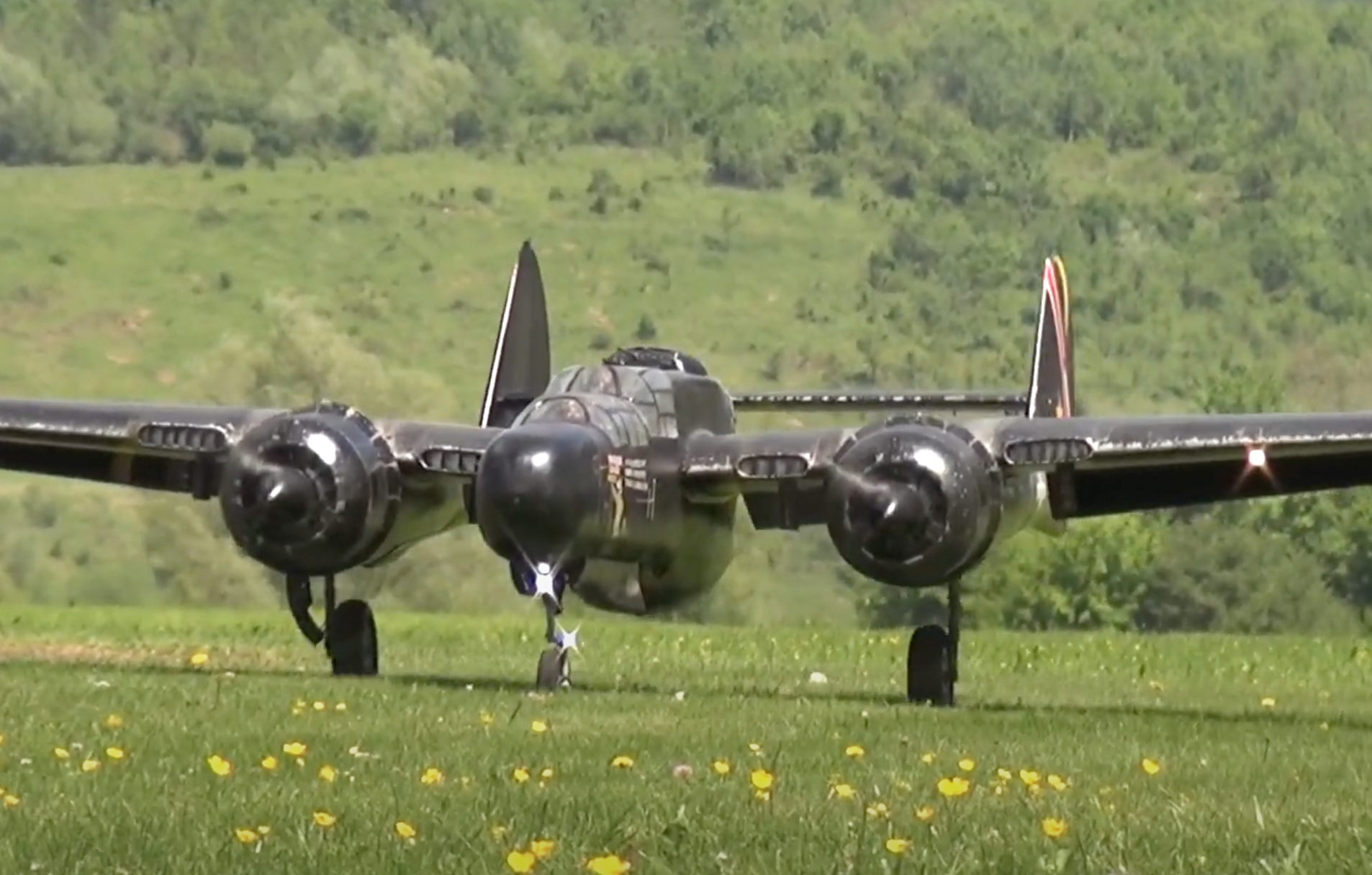



Fantastic model, love to see a video of it in flight.
Great job.